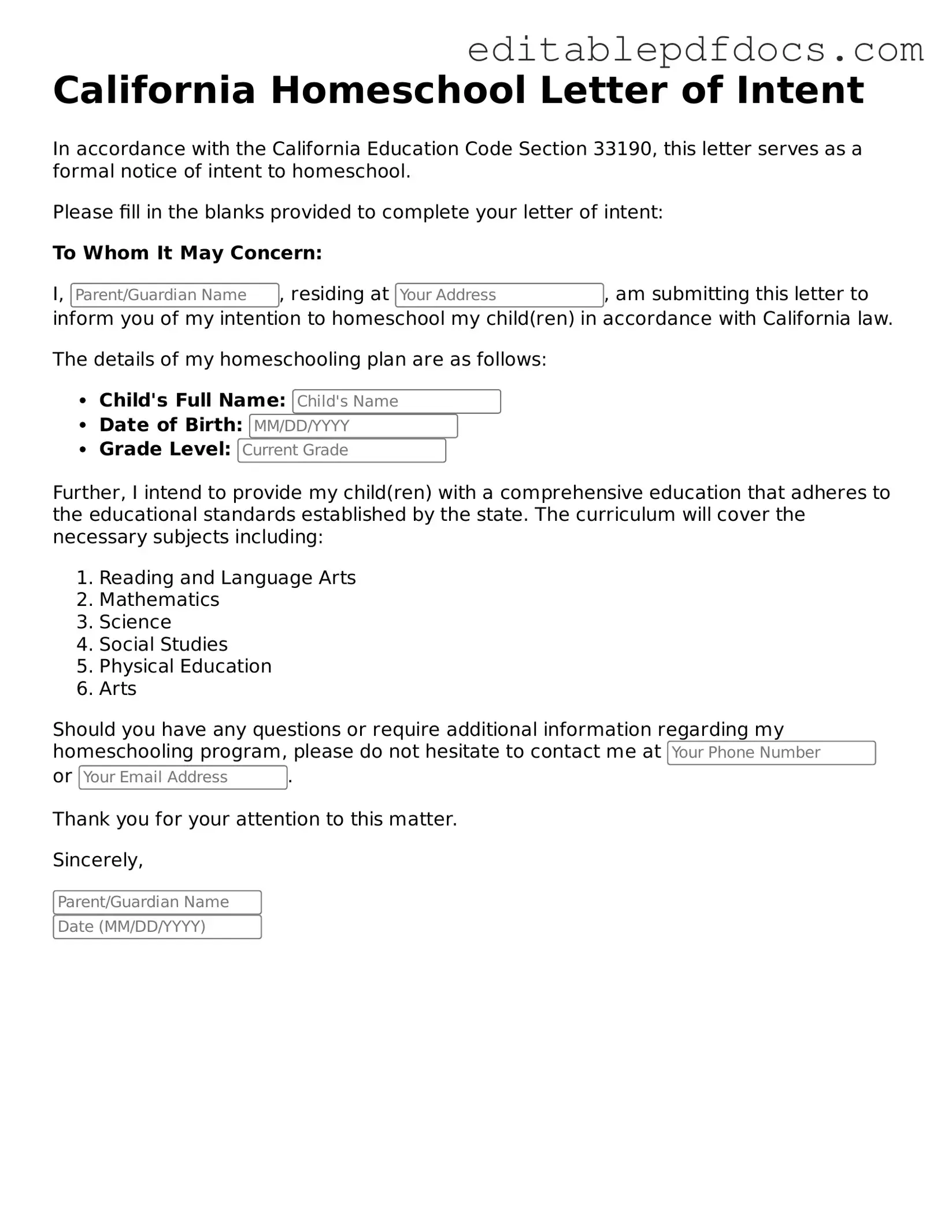Filling out the California Homeschool Letter of Intent form can be straightforward, but many make common mistakes that can lead to delays or complications. One frequent error is failing to provide all required information. Ensure that every section of the form is completed. Missing details can cause your application to be rejected.
Another mistake is not signing the form. It may seem trivial, but without a signature, the form is not valid. Always double-check that you have signed and dated your submission. Additionally, some individuals neglect to include the correct school year. Specify the year for which you are intending to homeschool to avoid confusion.
Using the wrong name for the school can also be problematic. If you have chosen a name for your homeschool, it should be consistent throughout the form. Inconsistencies can raise questions and lead to unnecessary complications.
Some people forget to update their contact information. If your address or phone number changes, it’s crucial to update this information on the form. This ensures that you receive any necessary correspondence regarding your homeschooling status.
Another common issue is submitting the form late. Be aware of deadlines and make sure to submit your Letter of Intent on time. Late submissions may result in penalties or the inability to homeschool for that year.
Inaccurate information can lead to problems as well. Always double-check your details for accuracy. Errors in names, addresses, or dates can create confusion and may require you to resubmit the form.
Some individuals fail to keep a copy of the submitted form. It’s important to retain a copy for your records. This can be useful if questions arise later about your homeschooling status.
Many overlook the requirement to notify the local school district. After submitting your Letter of Intent, you must inform your district. Failure to do so can lead to misunderstandings about your homeschooling status.
Lastly, misunderstanding the legal requirements can lead to mistakes. Familiarize yourself with California’s homeschooling laws to ensure compliance. Ignorance of the law is not an excuse, and being informed will help you avoid pitfalls.
